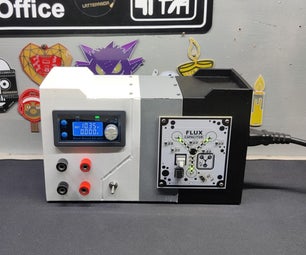Introduction: TOD: Diode Matrix ROM Intro (7-segment Display)
Tons
Of
Diodes
A new series of instructables that will be using tons and tons of diodes. No IC's are aloud, the only semi conductors are diodes and transistors. The only passive components aloud are capacitors, resistors, switches, inductors, and potentiometers (variable resistors for those who don't know). Another rule is it must have more diodes then any other component. I made this all up, and I made up this group to see how creative people can be with electronics without resorting to IC's. My next one (this one is just a little wimpy intro) might use up to 2000 diodes.
This is an intro to Diode Matrix Roms, basically it takes a signal in (switch) and gives an output (number on the display)
NOTE: I couldn't complete a project designed by myself because my breadboard is way too small, but That'll be fixed in later instructables.
Of
Diodes
A new series of instructables that will be using tons and tons of diodes. No IC's are aloud, the only semi conductors are diodes and transistors. The only passive components aloud are capacitors, resistors, switches, inductors, and potentiometers (variable resistors for those who don't know). Another rule is it must have more diodes then any other component. I made this all up, and I made up this group to see how creative people can be with electronics without resorting to IC's. My next one (this one is just a little wimpy intro) might use up to 2000 diodes.
This is an intro to Diode Matrix Roms, basically it takes a signal in (switch) and gives an output (number on the display)
NOTE: I couldn't complete a project designed by myself because my breadboard is way too small, but That'll be fixed in later instructables.
Step 1: Parts
7x 68 ohm resistor or higher (I used somewhere 110 I think)
1x 7-segment display
1x 10dip switch (I could only find an 8, just less characters to display)
23x signal diodes (cheapest you can find), I had 23, but I could only fit 9 on my board
1x breadboard, preferably big (unlike mine)
Some jumper wire
some sort of power supply, like 2AA or AAA's
wire cutters help
1x 7-segment display
1x 10dip switch (I could only find an 8, just less characters to display)
23x signal diodes (cheapest you can find), I had 23, but I could only fit 9 on my board
1x breadboard, preferably big (unlike mine)
Some jumper wire
some sort of power supply, like 2AA or AAA's
wire cutters help
Step 2: Put the 2 Main Components on the Board
insert the display and the dip switch (heheh dip switch) on the center of the board, ontop of the notch.
Step 3: Ground It
ground all of one side of the dip switch and ground the 2 ground pins of the display
Step 4: Save the LEDs!
Insert 7 resistors, one for each led and attach all of them to you power supply.
I later shortened the resistor leads to reduce clutter.
I later shortened the resistor leads to reduce clutter.
Step 5: Hook Up All the Diodes
Can't really help you here, just make sure they are all facing the right way and the leads arn't shorting out (especially the resistors, which could fry your display)
Step 6: Test It!
I could only fit so many diodes on my breadboard, so I could only make 5 numbers (well 6 if you include the default 8), only half that I could of done.
Congrats, you just made a Diode Matrix ROM
don't stop here, you could make lots of cool circuits. Later I'm going to make a big cube of weaving wire, with diodes connecting the weaving at certain spots driving an LED matrix.
Congrats, you just made a Diode Matrix ROM
don't stop here, you could make lots of cool circuits. Later I'm going to make a big cube of weaving wire, with diodes connecting the weaving at certain spots driving an LED matrix.
Step 7: Schematc
here's the schematic I forgot to put in, sorry!
Edit: New, better setup by Fernbot
just put all of the diodes in the corresponding places. The diodes in the 2nd schematic (fernbot's) are just an example and have no particular output, it just is an example. Fernbot's schematic consumes less power, yet uses the same amount of components, just rearranged.
Edit: New, better setup by Fernbot
just put all of the diodes in the corresponding places. The diodes in the 2nd schematic (fernbot's) are just an example and have no particular output, it just is an example. Fernbot's schematic consumes less power, yet uses the same amount of components, just rearranged.











